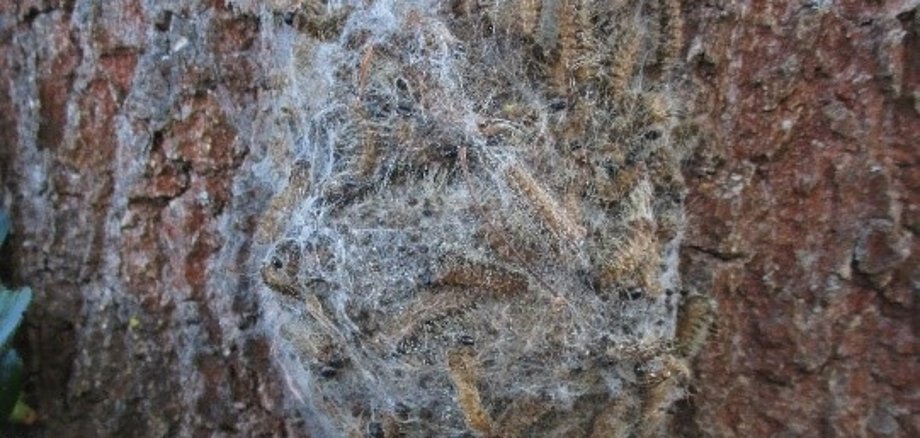Information on the oak processionary moth: The district informs
The environmental and climate protection department of the Waldeck-Frankenberg district provides valuable tips and information on the oak processionary moth. The caterpillars of the inconspicuous moth, which move in typical "processions" on oak trees, pose a serious health risk to humans and animals due to their stinging hairs. These stinging hairs, which contain the nettle toxin thaumetopoein, can cause skin irritation, breathing difficulties and, in severe cases, allergic reactions in humans.
The oak processionary moth has been detected in Waldeck-Frankenberg since 2019 and the number of reported cases is increasing. "Two confirmed detections were reported this year, which is a sign that the species is continuing to establish itself and spread," explains Ralf Enderlein from the Environmental and Climate Protection Service. The oak processionary moth can potentially occur in all areas with oak populations. With only two findings, the probability of sightings in the district is still low. To ensure that the population knows what to do in the event of an outbreak, the Environmental and Climate Protection Service provides information on this topic.
Rules of behaviour in the event of contact
In principle, contact with the caterpillars or their webs should be avoided. If people do come into contact with the stinging hairs, the experts recommend showering immediately and washing clothes at 60 degrees to remove the nettle venom. It should then be observed whether reactions such as skin rashes, shortness of breath or eye inflammation occur. If severe symptoms occur, a doctor should be consulted without delay. Pets should be checked after walks, as the hair can get stuck in their fur.
Oak processionary moth discovered - what now?
The oak processionary moth should only be controlled by specialised companies that are able to remove the nests by suction or the targeted use of biological agents. It is recommended to remove the nests in well-frequented places, such as areas where children spend time, and to report the findings to the Environmental and Climate Protection Service. Further information on this topic as well as tips and advice from the Environmental and Climate Protection Department on other topics can be found on the district's website at www.landkreis-waldeck-frankenberg.de/umwelt.
Caption: The oak processionary moth is also increasingly occurring in the Waldeck-Frankenberg district. Photo: Peter Käufler, Waldeck-Frankenberg district
Keywords:
Oak processionary moth Environmental and climate protection specialist service Further tips and information
